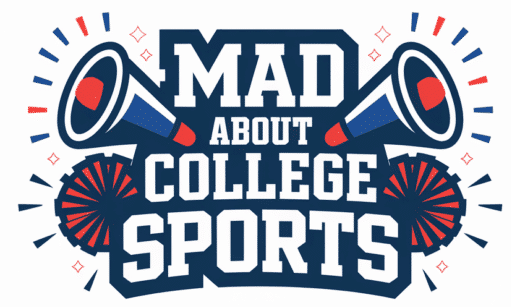Why the Transfer Portal is Bad for College Sports and Student-Athletes: Examining the Downsides and Long-Term Impact
The transfer portal has thrown college sports into chaos, leaving a lot of student-athletes with no real security. Sure, the portal gives players more freedom to move between schools, but it’s made rosters shaky and ramped up pressure on coaches and teams.
More players are jumping in than ever, but many don’t find a new school. Their education and playing careers end up hanging by a thread.
Take a look at the numbers—this problem is getting out of hand. In 2023, only 45 percent of student-athletes who transferred actually landed somewhere else. Thousands ended up without a team or a plan for their education.
Families, fans, and teams are all feeling the sting as college sports traditions get upended. Communities lose their favorite players overnight.
The portal, once meant to be a stepping stone, often turns into a gamble for young athletes who get bad advice. Articles like this one talk about how the transfer portal is shaking the very foundation of college athletics.
Contents
Overview of the Transfer Portal in College Sports
The transfer portal is now a huge force in college sports. It’s changed how student-athletes and schools deal with transfers and eligibility.
Players, coaches, and entire programs all feel the effects.
How the Transfer Portal Works
The NCAA set up the transfer portal as an online database. Student-athletes use it to show publicly that they want to leave their current college for another.
First, athletes tell their school they want to enter the portal. Then, once the school puts their name in, other schools can reach out and recruit them.
It’s a bit like free agency in pro sports.
Main features of the portal:
- All NCAA schools and coaches can access it
- Any team can contact student-athletes
- Athletes can enter as many times as they want
The portal was supposed to give players more control over their careers. Instead, it’s sparked more player movement, public departures, and a lot of worry about roster stability in college sports.
History and Growth of the Transfer Portal
The NCAA rolled out the transfer portal in October 2018. The goal was to make switching schools less of a hassle for athletes.
Before that, players needed their school’s permission just to talk to other programs. That led to endless power struggles between coaches and players.
Since then, the portal has exploded in popularity. Every off-season, hundreds of athletes enter—sometimes more.
Big programs now use the portal to build rosters or fill gaps on the fly.
Here’s how many men’s football and basketball players entered the portal over the years:
| Year | Football Players | Basketball Players |
|---|---|---|
| 2019 | 1,500 | 900 |
| 2023 | 2,500 | 1,500 |
That’s a pretty wild shift in collegiate athletics.
Role of the NCAA in Transfer Policies
The NCAA writes the rules for how and when athletes can transfer. The biggest change came in 2021, when they let student-athletes transfer once without sitting out a year.
Before, most athletes who switched Division I schools had to sit out a season. The new policy gives them immediate eligibility.
There’s no required orientation for athletes who want to use the portal. That can lead to confusion and rushed decisions.
The new rules make it easier to move, but they’ve also made college rosters unpredictable. Coaches have a harder time managing teams, and experts worry about what this means for the future of college athletics.
Negative Impact on Student-Athletes
Switching schools through the transfer portal often brings major headaches for athletes. It can mess with their academics, pile on stress, and make college sports less stable for those relying on scholarships and eligibility rules.
Academic Challenges and Risks
Transferring doesn’t always mean athletes stay on track with classes. Colleges don’t always accept all credits, so some students fall behind in their degree programs.
Training schedules make things even tougher. With long practices, travel, and games, student-athletes already struggle to keep up with schoolwork.
Transferring can set them back and even put their academic eligibility at risk if credits don’t line up.
There’s no standard education session before entering the portal, so athletes can’t always see these risks coming. Many end up with a heavier course load or new requirements, which just adds more stress.
| Type of Challenge | % of Student-Athletes Affected |
|---|---|
| Lost Credits | 43% |
| Delayed Graduation | 31% |
| Eligibility Issues | 17% |
Mental Health Concerns
The transfer process can be brutal on athletes’ mental health. Worrying about where they’ll end up, facing public criticism, and fearing they’ll lose their spot is a lot to handle.
Social media only makes it worse. Every move gets picked apart online.
Athletes have to adjust to new coaches, teammates, and a whole new campus. These changes can trigger anxiety or leave them feeling isolated.
Some don’t have access to good counseling, so their stress just builds. If they can’t find a new team quickly, that sense of belonging disappears.
Coaches might even pull back support from athletes who are considering a move, which just adds to the transfer portal turbulence.
Uncertainty in Scholarships and Eligibility
Jumping into the transfer portal doesn’t guarantee a new scholarship or a team spot. Often, athletes lose their current scholarship and have to hope another school picks them up.
Some never get another offer.
Eligibility rules are all over the place, with different conferences following different guidelines. Planning the next step in college sports is tough when the rules keep changing. Collegiate transfer portal causes more harm.
Transferring repeatedly puts students at risk of sitting out seasons or losing their chance to play. Without clear national support, some athletes end up out of school and out of sports, dreams on pause.
Disruption to College Sports Programs
The transfer portal has forced programs to rethink everything. Staff turnover, roster shakeups, and gaps in program development are now the norm.
These changes can mess with team performance and the stability of college athletics.
Instability for Coaches and Teams
Coaches now deal with constant uncertainty. When key players can leave anytime, it’s impossible to plan rosters or build a steady team culture.
Some teams lose multiple starters in just one offseason.
Recruiting has changed, too. Coaches spend more time re-recruiting their own players and chasing transfers, instead of focusing on long-term growth.
| Year | Avg. Transfers Per D1 Football Team |
|---|---|
| 2019 | 3.5 |
| 2021 | 7.8 |
| 2024 | 9.2 |
When players leave suddenly, backups with little experience have to step up. That can make team performance pretty uneven all season long.
Effects on Athletic Directors and Program Continuity
Athletic directors have their hands full. The portal means player movement never stops, so staff workloads spike.
Managing scholarships and budgets gets tricky, too.
Programs lose continuity when athletes bail after a year or two. Building a strong team used to take time, with players developing together. Now, rebuilding happens constantly.
Directors also have to deal with morale problems when players leave. The disruption of competitive balance is real, especially for smaller schools that can’t recruit top transfers.
The gap between elite and mid-level programs just gets wider.
Impacts on Athletic Performance
Frequent transfers break down team chemistry and slow player development. Athletic performance depends on trust and familiarity, but moving too often destroys those bonds.
Teams with high turnover usually struggle to run plays and keep results steady.
For student-athletes, switching teams means learning new playbooks, adapting to different coaching styles, and trying to fit in. Younger players, especially, need stability to develop.
A broken team culture leads to more losses and fewer postseason chances. Coaches and athletic directors have to work overtime to rebuild after losing key players to the portal.
Recruiting Complications Arising from the Transfer Portal
The transfer portal has completely changed college recruiting. Now, high school athletes face new challenges, and colleges have shifted priorities—especially with name, image, and likeness (NIL) deals in the mix.
Challenges for High School Recruits
High school recruits face tougher competition than ever for college roster spots. Coaches now sign experienced transfer athletes instead of investing years in developing teenagers.
This means fewer scholarships and opportunities for high school players to join Division I programs. Many schools fill spots with players who have already proven themselves in college games.
Recent studies show about 1,700 athletes entered the portal on its opening day—a number that really highlights how hard it’s become for high school prospects to get noticed.
For example:
| Year | Transfers Signed | High School Signees |
|---|---|---|
| 2019 | 890 | 2,030 |
| 2024 | 1,650 | 1,400 |
With more attention on transfer prospects, high school seniors often have to consider smaller programs or walk-on opportunities. The traditional recruiting pipeline is breaking down, and it’s a tough scene for athletes who once would’ve easily found spots at major schools.
More on this in this column discussing the harm from the portal.
Influence on NIL and the Recruiting Landscape
The transfer portal didn’t just disrupt recruiting; it’s changed how everyone thinks about name, image, and likeness deals (NIL). Players in the portal are frequently looking for new deals, and some schools use NIL packages to lure experienced athletes.
Recruiting now feels a lot like free agency. Instead of focusing on developing talent from high school, coaches balance NIL budgets and compete to sign athletes who’ve already made a name for themselves somewhere else.
Schools spend more time building offers for transfer athletes with proven performance and marketable profiles. These players can provide instant impact, so handing out big NIL deals is now more common for transfers than for incoming freshmen.
The process of evaluating transfer prospects and NIL deals has become central to recruiting strategy.
NIL is now a key part of recruitment, adding another layer of complexity for both coaches and athletes. High school players must worry not just about scholarships but about whether schools have enough NIL money left after recruiting transfers. That’s a lot to keep track of for a teenager.
Effects on Specific College Sports
The transfer portal has led to faster player movement and higher roster changes in major sports. This shakes up both program stability and team success at top schools across the country.
College Football and Program Stability
The transfer portal makes it harder for college football programs to keep their teams together. Coaches face new headaches as players leave for better opportunities or more playing time.
Teams can quickly lose experienced players who were supposed to contribute for several years. For top programs like Clemson, sudden player exits have hurt chemistry.
Rebuilding depth takes time, especially when unexpected departures leave gaps at key positions. Coaches now spend more time on recruiting both high schoolers and transfers.
Here’s a look at how top football programs have seen increased transfer numbers over the past five years:
| School | Transfers Out (2019) | Transfers Out (2024) |
|---|---|---|
| Clemson | 4 | 13 |
| Alabama | 7 | 18 |
| Ohio State | 5 | 12 |
The quick changes make it tough for coaches to build and maintain successful cultures. Fans might also struggle to connect with players who are only on campus for a season or two.
This revolving-door culture impacts not just the teams but the overall health of college football. It’s a lot to take in, and honestly, who knows where it’ll all end up?
Basketball Programs and Player Movement
Men’s basketball deals with even more player turnover than football. In just one recent season, over 1,600 Division I basketball players jumped into the transfer portal.
A lot of teams lose their top scorers or most experienced leaders. That makes it tough to build chemistry or really shape a team’s identity.
Mid-major programs often act as feeder teams for bigger schools. Their best players get noticed and leave for higher-profile programs.
This cycle breaks up promising rosters. It’s discouraging for anyone hoping to see a team develop over several years.
Coaches now have less time to develop freshmen. If a player doesn’t like their minutes or a coaching change, they might transfer without much hesitation.
All this uncertainty? It makes it harder for fans and alumni to keep up with their favorite programs. Basketball teams are in a constant shuffle, and that affects both how players grow and how the team performs.
If you want to dig deeper into how the transfer portal messes with team chemistry, check out the discussion on transfer portal effects on roster cohesion.






